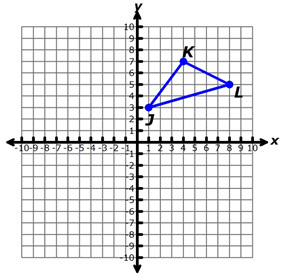
Triangle JKL is shown in the graph. If triangle JKL is reflected across the y-axis, what will be the coordinates of K'?

A. (4, 7)
Incorrect. These are the coordinates of Point K. Reflect the triangle across the y-axis and identify the points of the reflection of Point K.
B. (7, 4)
Incorrect. These are the coordinates of the reflection of Point K across the line y = x.
C. (4, -7)
Incorrect. These are the coordinates of the reflection of Point K across the x-axis.
D. (-4, 7)
Correct! A reflection across the y-axis changes the sign of the x-coordinate of a point.
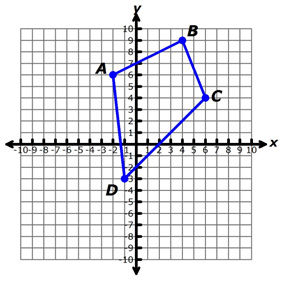
A. (-5, 0)
Incorrect. These are the coordinates of Point A'.
B. (-2, 6)
Correct! Point B should be translated 3 units to the left, or 4 – 3 = 1, and 6 units down, or 9 – 6 = 3.
C. (3, -2)
Incorrect. These are the coordinates of Point C'.
D. (-4, -9)
Incorrect. These are the coordinates of Point D'.
Triangle JKL is reflected across the x-axis. Which of the following figures best shows this transformation?
A.
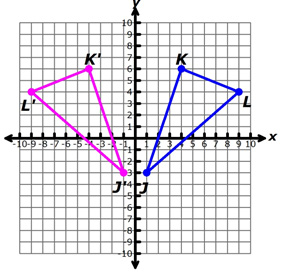
Incorrect. This is a reflection across the y-axis.
B.
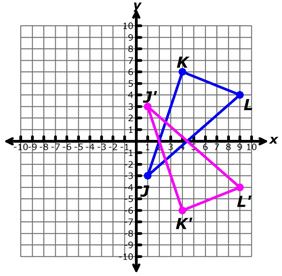
Correct! A reflection across the x-axis is a vertical reflection with the x-axis as the line of symmetry.
C.
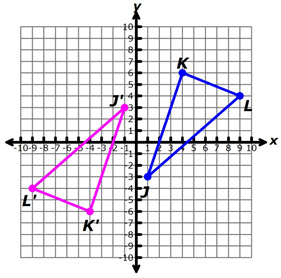
Incorrect. This is a reflection across both the x-axis and the y-axis.
D.
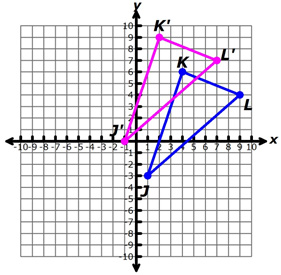
Incorrect. This is a translation of triangle JKL.
A.
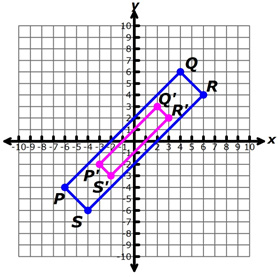
Incorrect. The dilated rectangle is a reduction, and a scale factor of 1.5 will result in an enlargement.
B.
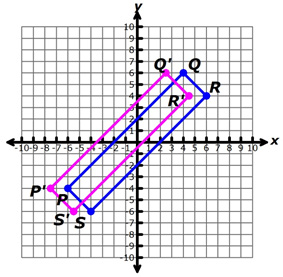
Incorrect. This figure shows a translation of 1.5 units to the left.
C.
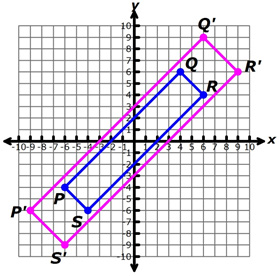
Correct! Each coordinate of the dilated rectangle is 1.5 times larger than the corresponding coordinate of the original rectangle.
D.
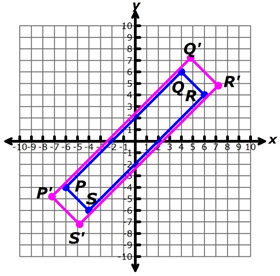
Incorrect. This represents a dilation by a scale factor of 1.2 instead of 1.5.
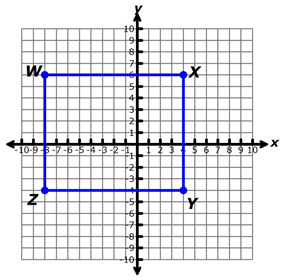
A. 22 units
Correct! The perimeter of W'X'Y'Z' will be
1
2
the perimeter of WXYZ.
B. 44 units
Incorrect. W'X'Y'Z' is a reduction of WXYZ, and this is the perimeter of the original rectangle.
C. 60 units
Incorrect. This is half of the area of the original rectangle, and perimeter is the sum of the lengths of the sides.
D. 120 units
Incorrect. This is the area of the original rectangle, and perimeter is the sum of the lengths of the sides.